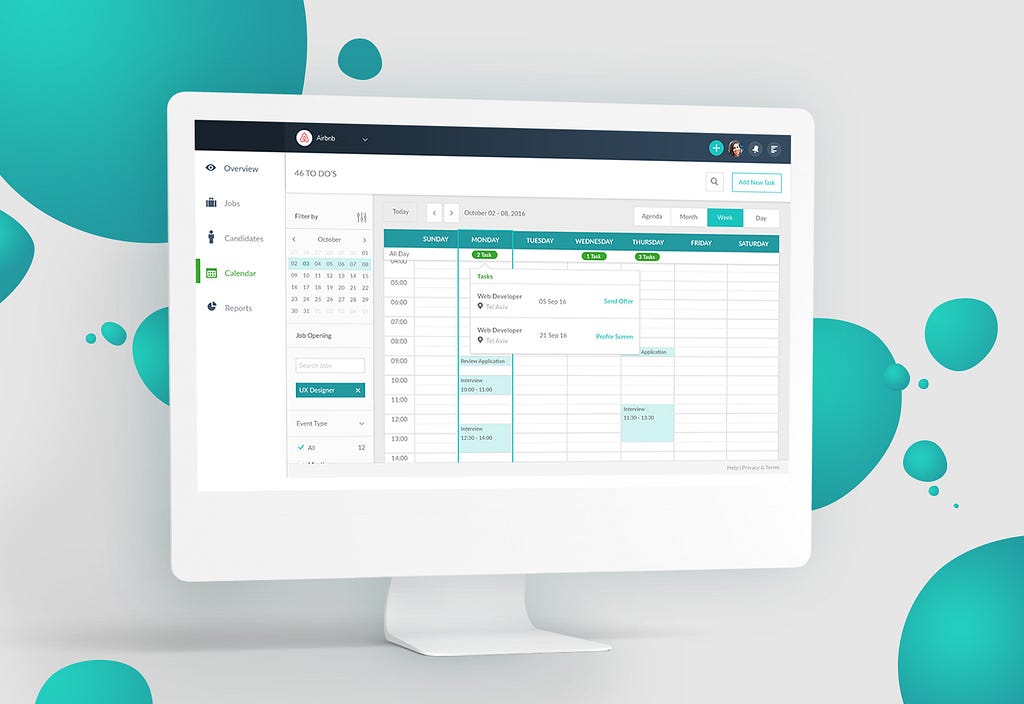Latest news about Bitcoin and all cryptocurrencies. Your daily crypto news habit.

What makes any business great is people who work in a company. But the tricky part lies in the masterful management of these people and the excessive amount of paperwork that comes along.
Since we now live in a fully digitized world, it is obvious that companies strive to benefit from the rapidly evolving technology and they are looking for possible ways to implement it into the work processes. The HR industry follows the lead and utilizes the employee management systems that proved to be more efficient and accurate than manual processes, performed by people. And, since there is always room for improvement, these systems are impacted by such emerging technologies, as AI, machine learning, data science, and big data.
The world is in a full digitization swing — and there are many changes coming for all global industries, including HR. And if a company wishes to elevate its employee management, it has to follow the lead and adopt the latest technologies into its practice.
What is employee management and why does it matter?
Employee management is a set of practices and techniques for the effective management of staff and all related operations. Aside from the technical aspect, employee management helps to identify the weak points of underperforming employees and fix them, motivate and encourage and, most importantly, build trust between the employer and the employees. This is a psychological aspect.
The technical side of employee management is a special system that encompasses all procedures in a digital format and allows their smooth and accurate operation. Such a system often includes time tracking, management of paid off-work hours, a list of employees and their full profiles, etc.
Of course, the employee management systems differ in complexity and scalability. Thus, before choosing such a system, one has to assess the critical issues that need to be resolved and categorize these issues into “must-have” and “nice-to-have”. As well, different systems suit companies of different sizes, so that’s another point to keep in mind. Thus, before purchasing an employee management system, first list down your current and most critical issues and then start the research on the available options.
Technologies that elevate employee management systems
The biggest issue that HR specialists deal with is the overwhelming amount of manual processes and paperwork. Even though its biggest part is transferred into digital with the help of an EM system, many operations there are still performed by people. Thus, there remains a possibility of human error, inaccuracy, lack of speed, etc. To resolve these issues, many development companies adopt the latest technologies to accelerate work processes and merge all processes into one seamlessly working mechanism.
Business Intelligence
Business intelligence is always confused with data science and vice versa. While data science focuses more on predictive analytics and answers the question “what will happen in the future”, business intelligence analyzes the history data, answers “what happened and why”, and gathers valuable insights from this data.
BI comprises a set of techniques and strategies and serves as a priceless tool for the EM system. With the help of BI, companies are able to analyze the employees’ behavior and business performance better and adjust the development strategy correspondingly.
Data visualization
Data visualization represents the data in a visual and understandable manner: graphs, diagrams, maps, etc. Its biggest advantage is that it helps to better understand and see certain patterns in the data.
Data visualization tools are included or come along with the Business Intelligence and are often powered by machine learning. Due to ML ability to identify hidden patterns and non-obvious relations in the data, the visual data representations turn out to be very accurate and detailed.
Data visualization plays an important role in any company and has numerous benefits:
- Helps to process the data faster
- Is remembered better
- Shows insights that may otherwise be missed
- Contributes to sales growth and operations’ efficiency
Cloud ETL
ETL stands for “Extract — Transform — Load” and ETL platforms are a must-have for any companies that work with big data. ETL transforms disparate data into organized data sets and includes a variety of processes, like data parsing, enrichment, validation.
And, because ETL deals with an excessive amount of data, cloud ETL tools are the most effective to use. Cloud storage is reliable, fast and secure and has no limits for the amount of data that one works with.
Social networks data extraction
Social networks have steadily become something more than just an entertainment. Today, they serve as a valuable source of information, and businesses take full advantage of it.
Development companies all over the world are presenting social network data mining tools that extract the valuable information about the employees from social networks and organize it into clear and useful charts and reports. For example, the data from social networks is already used by credit scoring companies in order to better evaluate the borrower — and this is not the only way to use this information!
Artificial Intelligence
AI is applied in almost every industry and may become a standard in the near future. Artificial intelligence is especially valuable in the field of predictive analytics as it allows building strong predictive models and, based on that, developing a solid strategy for future growth.
Since employee management utilizes massive data sets, AI for employee management can assess and predict one’s behavior and prevent unwanted situations, like an employee’s leave. This, in turn, will assist in increasing the company’s profitability and performance.
Future trends
While the usage of BI and AI will continue to develop, there are other HR trends for 2019 that are worth paying attention to.
RPA
Robotic process automation makes life easier for industries worldwide as it accelerates the processes and tends to perform in a more accurate manner than people do. The most basic RPA example is chatbots — but basically, any process can be automated to some extent.
Employee management can deploy RPA as well: for example, you may implement a corporate chatbot that will be able to answer the most common questions in no time and in a precise manner.
Automated recruitment
Many HR specialists still spend an awful amount of time on CV screening and candidate selection. Thus, development companies are starting to come up with solutions that free the HRs from this mundane work by automating the screening and selection processes.
Such apps normally allow to set the desired parameters for candidate screening and are able to process a great number of resumes within mere minutes. This is an incredibly valuable asset for any HR specialist as it allows to focus on more specific and important tasks while heaving all the information ready. At DashBouquet we have developed such an app — read about it below.
A case study by DashBouquet: AI-based recruitment app
We strived to create an app that would free the recruiters from the monotonous and tiresome screening process. Instead, we allowed artificial intelligence to take care of that, enabling the HR specialists to focus on interviewing instead.
The tech stack for our app includes:
- React
- NodeJS
- Typescript
- LoopbackJS
- MongoDB
In short, the employer chooses a number of platforms that contain resumes and sets them into the system. The system, in its turn, will use the determined algorithms to select the matching candidates.
The technologies that we used convert job descriptions and applicants’ resumes into the necessary data format, thus allowing the system to compare and match them. In addition, the system is also capable of job posting due to the API connections.
The app itself is a high-load and multi-user one. It has different security levels in accordance with different user roles and is integrated with a few external systems as well. As for the screening process, the app determines whether the candidate fits the position on a scale from 0 to 10. We also solved the storage issue by integrating the app with MongoDB and Neo4j databases.
Conclusion
Employee management is all about people — but that implies managing the data about these people too. New technologies emerge on a regular basis and this leads to employee management systems becoming more advanced. Thus, there is a big chance for modern development companies to come up with an innovative approach and offer an efficient and scalable solution.
Employee Management: Modern Systems and Future Trends was originally published in Hacker Noon on Medium, where people are continuing the conversation by highlighting and responding to this story.
Disclaimer
The views and opinions expressed in this article are solely those of the authors and do not reflect the views of Bitcoin Insider. Every investment and trading move involves risk - this is especially true for cryptocurrencies given their volatility. We strongly advise our readers to conduct their own research when making a decision.



